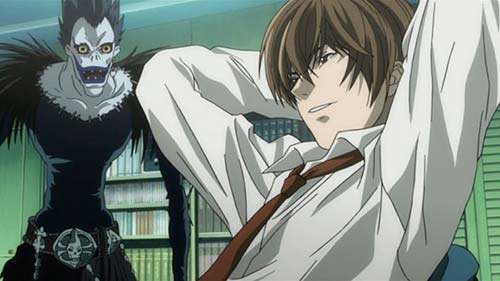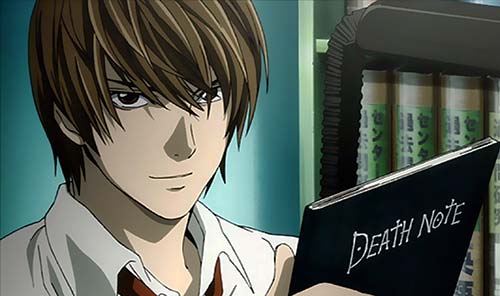
Sydney
June 22-23, 2024
Sydney Showground Olympic Park



Recently Netflix announced that they were working on the second chapter for their live-action Death Note adaptation. If you were following the drama when the first film released on Netflix, you’ll know that it received a mixed reception to say the least.
Fans of the manga and anime generally decried it as being unfaithful and shallow compared to the Bible-length original, but some people who watched it with no prior investment in the source material said it was an alright thriller with a cool premise (some viewers had less kind words). So with Netflix deciding to give this another crack, we thought we’d offer some suggestions on how to make the sequel better for everybody!
This one is guaranteed to satisfy fans of the original, and newcomers. Something that frustrated many people about the first film was that the characters were not as bright as their original counterparts.
 This isn’t a jab at the writers either. It’s obvious that this was done intentionally, and is probably down to cultural differences. In the original, Light and L are incredibly cold and calculating, they have no problem sacrificing family, friends, and anyone else to get to their end goal. Obviously, L doesn’t want to compromise on his morals about killing, but he has no problem with torture at least.
This isn’t a jab at the writers either. It’s obvious that this was done intentionally, and is probably down to cultural differences. In the original, Light and L are incredibly cold and calculating, they have no problem sacrificing family, friends, and anyone else to get to their end goal. Obviously, L doesn’t want to compromise on his morals about killing, but he has no problem with torture at least.
They are two ruthlessly smart individuals playing crazy complex mind games with each other. In the Netflix version, Light and L go off their emotions way more than their minds. It makes sense, it might be tough for a Western audience to buy into the realism of Light and L being two inhuman monsters who have seemingly no attachment to anything. This kind of character is explored a lot more in Eastern media, however.
 But what is impossible to ignore for people on both sides of this debate is that it is incredibly frustrating to watch Light and L just make plain bad decisions, as we’re watching at home, screaming at the TV for them to just put their thinking hats on for literally two seconds.
But what is impossible to ignore for people on both sides of this debate is that it is incredibly frustrating to watch Light and L just make plain bad decisions, as we’re watching at home, screaming at the TV for them to just put their thinking hats on for literally two seconds.
These emotional characters are all over Western film and TV, because they’re easy to identify with, we can generally understand why they do what they do because of our empathy. This is especially true of horrors and thrillers, because faced with the extreme pressure, we might all react the same, and that’s fine for those works, but this is Death Note.
The material is grounded in a highly cerebral conflict. The Netflix version is a battle of wits, with all the wits taken out. Making the characters more cunning, like their original versions, is going to keep the anime and manga fans happy, but also, it’s just gonna make the movie better for casual viewers too. Now they get to watch a thriller about smart people doing smart stuff.
Obviously, a full-length manga or anime is going to have a much easier time at this, due to the fact that they can spend way more time introducing and setting up crucial plot points, and background details, than a film can, however, this fact is ultimately irrelevant to the average viewer.
 The Netflix version of the film tried very hard to fit in a lot of the character drama from the original, at the expense of the actual story. When your movie is all character development, there’s barely enough time left over to have the cool cat-and-mouse back-and-forth that Death Note does so well, which is why it feels incredibly rushed when all of a sudden, right at the end, Light suddenly goes from bumbling fool to criminal mastermind, kinda, but we’ll get to that in a bit.
The Netflix version of the film tried very hard to fit in a lot of the character drama from the original, at the expense of the actual story. When your movie is all character development, there’s barely enough time left over to have the cool cat-and-mouse back-and-forth that Death Note does so well, which is why it feels incredibly rushed when all of a sudden, right at the end, Light suddenly goes from bumbling fool to criminal mastermind, kinda, but we’ll get to that in a bit.
Hopefully, the sequel focuses on the mind games more and leaves the character drama to one side. His relationship with Mia is a prime example. In the original, their relationship is superfluous, her presence is simply another obstacle to Light that he figures out how to turn into an advantage, by manipulating her. Her character is one-note at best, she’s really just a pawn for Light’s games, and she serves to emphasise how cruel Light really is.
In the Netflix version, their relationship is a critical plot point; in fact, the big twist at the end is contingent on Mia’s presence, as she turns out to be the “real villain.” Which brings us to the last point.
There’s nothing inherently wrong with an adaptation deviating from its source material, many adaptations handle such a thing very well, we would argue that the changes to Death Note 2017 are not the helpful kind.
 For one thing, the changes to Light only make the character more generic, where there was once a complex character who subverted genre conventions. In the original, there is an interesting disparity in Light’s character that is played with. On the surface, he is Mr. Popular, attractive, good grades, great with girls, very happy family life, upper-middle class. Not the person you would expect to be a serial killer.
For one thing, the changes to Light only make the character more generic, where there was once a complex character who subverted genre conventions. In the original, there is an interesting disparity in Light’s character that is played with. On the surface, he is Mr. Popular, attractive, good grades, great with girls, very happy family life, upper-middle class. Not the person you would expect to be a serial killer.
Light Turner on the other hand, is the exact caricature of a person you would expect to be a psychotic serial killer. Especially now, in the current social climate where men exactly like Light Turner attack and harass women and their peers because they feel like their superiority is not respected, Death Note misses an opportunity to subvert expectations and make Light a much more interesting character, like he was in the original.
Perhaps the manga was just much farther ahead of its time than it had any right to be. This is also where the other problem arises, because Light Turner is portrayed as the “good guy” in Death Note 2017. The hero. We are supposed to empathise with this guy who extorts his peers for money to finish their homework, who has a creepy obsession with this cheerleader and also kills people he deems unworthy of life. He also sometimes kills people to impress girls. But it’s okay because sometimes he won’t kill certain people because then he’d feel guilty…
 The old Light Yagami was no angel, but the author was aware of that, and the original work actually plays with that conflict by making Light and L’s viewpoints both viable. The Team Light and Team L discussion is still going strong all these years later because you can see both sides.
The old Light Yagami was no angel, but the author was aware of that, and the original work actually plays with that conflict by making Light and L’s viewpoints both viable. The Team Light and Team L discussion is still going strong all these years later because you can see both sides.
Light Yagami really believed it was his obligation to make the world a better place for the good people, and even though he was morally reprehensible, he believed it was for a higher purpose, and he followed a very strong moral compass to that end. Light Turner has no such moral compass, which makes him a very hard character to feel anything positive towards, and even despite that, the movie stops short of calling Light out. His spotlight is stolen by Mia in the end, and any opportunity to say something definitive or philosophical about this ideological conflict, which is what Death Note is about, is lost.
We hope that the sequel hones in a lot more on the ideological conflict that made Death Note so compelling in the first place, and we hope it tries to say something about that conflict.
This isn’t intended to be a hit-piece on the Netflix Death Note film. We’re just fans and casual viewers who both want to see this sequel reach the true potential we know it can. The first attempt has a lot going for it, like the strong performances from everybody, a striking visual direction from Adam Wingard, and brief flashes of excellence.
If Netflix chooses to embrace what made the original great, instead of trying to distance itself from it, this sequel could truly be amazing.






